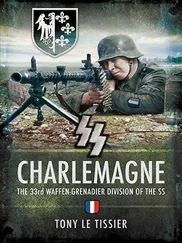As a consequence, in Italy and West Germany Christian Democrat parties secured (with some American assistance) a near monopoly of political power for many years to come. In France—thanks to the corrosive effects of two colonial wars, followed in 1958 by De Gaulle’s return to power—the MRP did rather less well. But even there it remained the arbiter of power until the mid-fifties, with an uncontested claim to certain key ministries (notably Foreign Affairs). Catholic parties of a Christian Democrat bent exercised unbroken power in the Benelux countries for more than a generation, in Austria through 1970.
The leaders of Christian Democratic parties, like Britain’s Winston Churchill, were men of an earlier time: Konrad Adenauer was born in 1876, Alcide de Gasperi five years later, Churchill himself in 1874. This was no mere coincidence or biographical curiosity. By 1945 many continental European countries had lost two generations of potential leaders: the first to death and injury in the Great War, the second to the temptation of Fascism or else to murder at the hands of Nazis and their friends. This shortfall manifested itself in the generally rather mediocre quality of younger politicians in these years—Palmiro Togliatti (who had spent much of the previous twenty years as a political operative in Moscow) was an exception. The special appeal of Léon Blum, who returned to public life in France after imprisonment by Vichy and incarceration in Dachau and Buchenwald, was not just his heroism but also his age (he was born in 1872).
At first sight it may seem rather odd that so much of the rehabilitation of postwar Europe was the work of men who reached maturity and entered politics many decades before. Churchill, who first entered Parliament in 1901, always described himself as a ‘child of the Victorian Age’. Clement Attlee, too, was a Victorian, born in 1883. But it is perhaps not so very surprising after all. In the first place such older men were rather unusual in surviving politically and ethically unscathed from thirty years of turmoil—their political credibility enhanced, as it were, by their scarcity value. Secondly, they all came from the remarkable generation of European social reformers who reached maturity during the years 1880-1910—whether as socialists (Blum, Attlee), liberals (Beveridge, or the future Italian President Luigi Einaudi, born in 1874) or progressive Catholics (De Gasperi, Adenauer). Their instincts and interests were very well suited to the post-war mood.
But thirdly, and perhaps most important, the old men who rebuilt Western Europe represented continuity. The vogue between the wars had been for the new and the modern. Parliaments and democracies were seen by many—and not just Fascists and Communists—as decadent, stagnant, corrupt and in any case inadequate to the tasks of the modern state. War and occupation dispelled these illusions, for voters if not for intellectuals. In the cold light of peace, the dull compromises of constitutional democracy took on a new appeal. What most people longed for in 1945 was social progress and renewal, to be sure, but combined with the reassurance of stable and familiar political forms. Where the First World War had a politicizing, radicalizing effect, its successor produced the opposite outcome: a deep longing for normality.
Statesmen whose experience reached back beyond the troubled inter-war decades to the more settled and self-confident era before 1914 thus had a particular attraction. In the continuity of their person they could facilitate a difficult transition from the over-heated politics of the recent past to a coming era of rapid social transformation. Whatever their party ‘label’, the elder statesmen of Europe were all, by 1945, skeptical, pragmatic practitioners of the art of the possible. This personal distance from the over-confident dogmas of inter-war politics faithfully reflected the mood of their constituents. A post-‘ideological’ age was beginning.
The prospects for political stability and social reform in post-World War Two Europe all depended, in the first place, on the recovery of the continent’s economy. No amount of state planning or political leadership could conjure away the Himalayan task facing Europeans in 1945. The most obvious economic impact of the war was on housing stock. The damage to London, where three and a half million homes in the metropolitan area were destroyed, was greater than that wrought by the Great Fire of 1666. Ninety percent of all homes in Warsaw were destroyed. Only 27 percent of the residential buildings in Budapest in 1945 were habitable. Forty percent of German housing stock was gone, 30 percent of British, 20 percent of French. In Italy 1.2 million homes were destroyed, mostly in cities of 50,000 or more people. The problem of homelessness, as we have seen, was perhaps the most obvious consequence of war in the immediate post-war era—in West Germany and Britain the housing shortage would last well into the mid-1950s. As one middle-class woman expressed it, upon emerging from a Post-War Homes Exhibition in London: ‘I’m so desperate for a house I’d like anything. Four walls and a roof is the height of my ambition.’ [19] Quoted in Maureen Waller, London 1945 (2004), page 150.
The second area of evident damage was in transport—merchant fleets, railway lines, rolling stock, bridges, roads, canals and tramways. There were no bridges across the Seine between Paris and the sea, just one left intact across the Rhine. As a consequence, even if mines and factories could produce necessary goods they could not move them—many European coal mines were working again by December 1945 but the city of Vienna was still without coal.
The visual impact was the worst: many countries looked as though they had been battered and broken beyond any hope of recovery. And it was true that in almost every European country involved in the Second World War the national economy stagnated or shrunk when compared even with the mediocre performance of the inter-war years. But war is not always an economic disaster—on the contrary, it can be a powerful stimulus to rapid growth in certain sectors. Thanks to World War Two the US surged into an unassailable commercial and technological lead, much as Britain had done during the Napoleonic wars.
And indeed, as Allied surveyors soon realized, the destructive economic impact of the war against Hitler was by no means as total as they had first thought, even in Germany itself. The bombing campaign, for all its human costs, had wrought less economic damage than its advocates expected. Little more than 20 percent of German industrial plant had been destroyed by May 1945; even in the Ruhr, where much Allied bombing had been concentrated, two thirds of all plant and machinery had survived intact. Elsewhere, in the Czech lands for example, industry and agriculture thrived under the German occupation and emerged virtually unscathed—Slovakia, like parts of Hungary, saw accelerated industrialization during the war years and actually emerged better off than before.
The dramatically skewed nature of much of the damage, such that it was people and places that suffered terribly while factories and goods were relatively spared, contributed to an unexpectedly speedy recovery after 1945 of core economic sectors. Engineering industries flourished during the war. The UK, the USSR, France, Italy and Germany (as well as Japan and the USA) all emerged with a larger stock of machine tools than they started with. In Italy only the aeronautic and shipbuilding industries suffered serious damage. Engineering firms situated in the North, and thus out of reach of the heaviest fighting during the Italian campaign, did rather well (as they had in World War One), their wartime output and investment more than compensating for any harm they suffered. As for the machine tool industry in what became West Germany, it lost just 6.5 percent of its equipment through war damage.
Читать дальше












